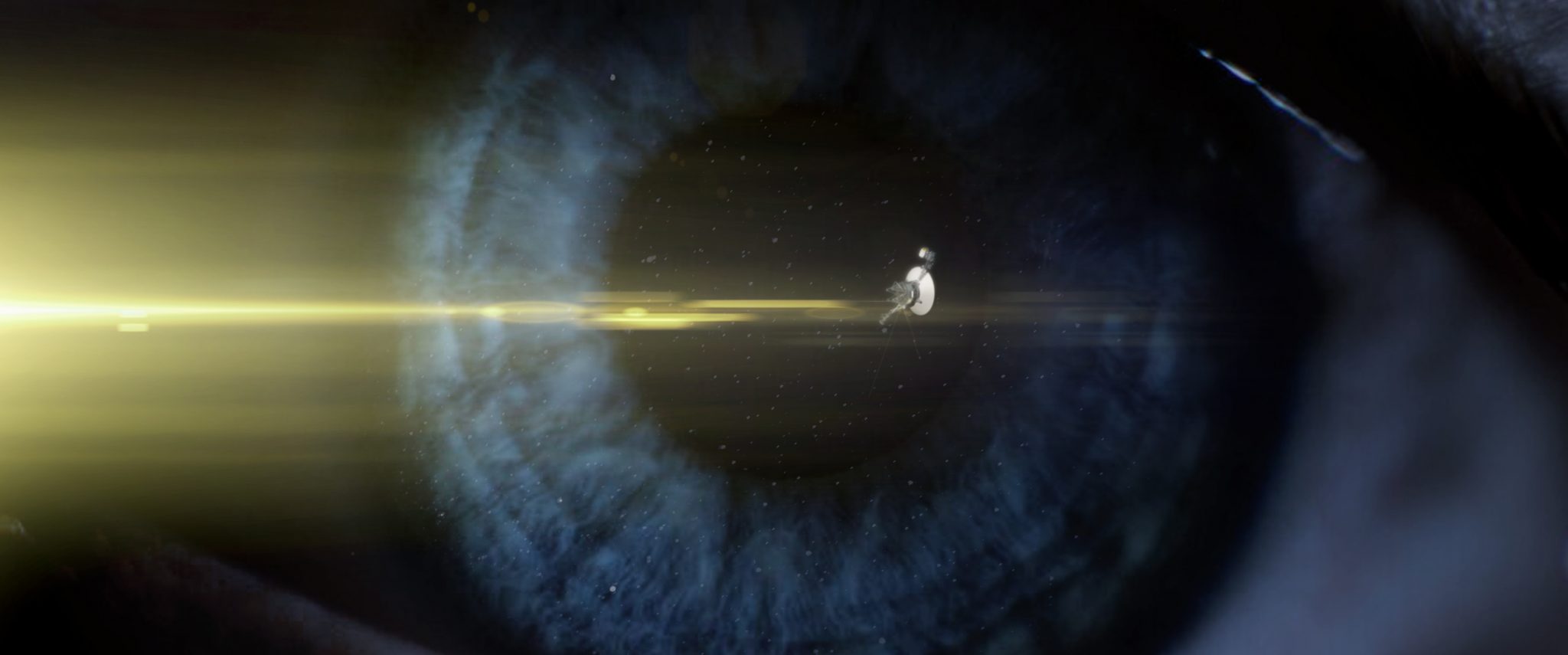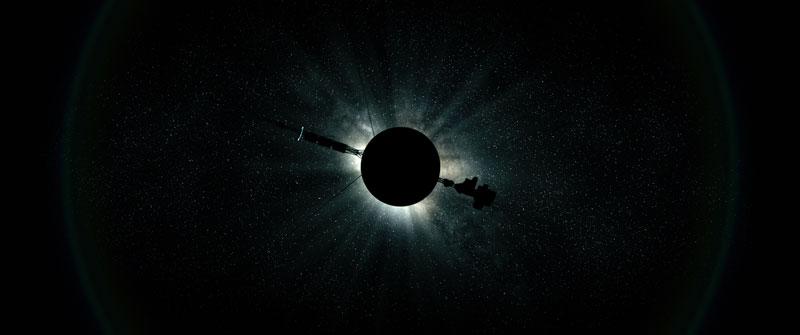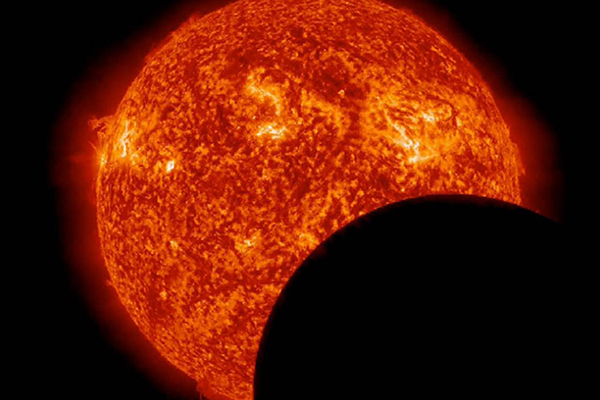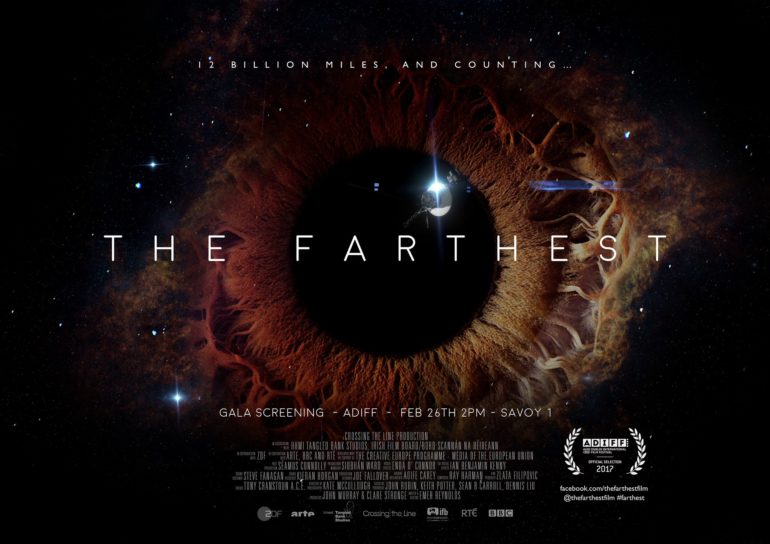The 2017 Audi Dublin Film Festival will play host to a special presentation of one of the most interesting Irish documentaries of the year, when Emer Reynolds presents her space-based exploration The Farthest on Sunday, February 26th.
Written and directed by multiple-IFTA-award-winning editor Reynolds, the two-hour film documents the story of NASA’s Voyager mission, which began 40 years ago this August, and the vision that propelled them farther than anyone could ever have hoped. Originally approved to travel only to Saturn and Jupiter, the spacecraft took advantage of a once-in-176-year planetary alignment and used gravity-assisted slingshot trajectories to extend the missions, with Voyager 2 also visiting Uranus and Neptune. The two spacecraft, equipped with less computing power than a modern mobile phone, sent back unprecedented images and data from all four outer planets and their many spectacular moons.
Four decades later, Voyager 1 has travelled more than 12 billion miles and Voyager 2 more than 10 billion, and both nuclear-powered spacecraft continue to send back data. In 2012, Voyager 1, which is travelling at more than 320 million miles per year, became the first human-made object to enter interstellar space – leaving our solar system behind and ushering humanity into the interstellar age.

Emer Reynolds’ new film is simply stunning. More than merely a story about the Voyager space mission, it’s about the team, the ambition and the dream.
– Gráinne Humphreys, Festival Director
Powerful, poetic and cinematic, The Farthest celebrates these magnificent machines, the men and women who built them and the vision that propelled them farther than anyone could ever have hoped.
This is one of the boldest and most spectacular space missions of all time. As we approach the 40th anniversary of the mission’s launch, with both spacecraft still going strong and farther from Earth than any other object humans have created, we felt it was important to tell the story of how Voyager came to be and what important discoveries it made possible. The Farthest is a thrilling tale that will inspire awe and admiration in viewers of all ages, and we’re delighted to join with the PBS and Crossing The Line to bring it to the screen.
– Executive Producer Sean B. Carroll of HHMI Tangled Bank StudioVoyager was a game-changer. A group of enterprising scientists and engineers sent these two tiny probes on a mission of discovery, but they couldn’t have imagined how successful the mission would be. Voyager laid the groundwork for so much of what we know about the outer planets and their many, incredibly varied moons, and both spacecraft are now breaking new ground with the information they’re sending back about the edges of our solar system and the nature of interstellar space.
– Producer John Murray of Crossing The Line Films

With the participation of more than 20 of the original and current mission scientists, engineers and team members, the film tells the captivating tale of one of humanity’s greatest achievements in exploration. From the aluminium foil from the local market that was added at the last minute to protect the craft from radiation to the near disasters at launch to the emergency manoeuvres to fix a crucial frozen instrument platform, viewers get a sense of how difficult – and rewarding – space exploration can be.
And then there is the science: Between them, the Voyagers explored all four of the giant outer planets of our solar system, 48 of their moons, and their unique systems of rings and magnetic fields. Highlights include the discovery on Jupiter’s moon Io of the first active volcano beyond Earth; spoke-like structures that form and disappear between Saturn’s rings; the Great Dark Spot, a giant storm on Neptune that is the size of Earth and similar to the Great Red Spot on Jupiter; and active geyser-like eruptions on Neptune’s moon Triton, which spew gas and dust from the moon’s interior miles into its thin atmosphere.

After completing its mission to the outer planets, Voyager turned its camera back toward Earth and, at the request of famed astronomer Carl Sagan, took one of the most famous images of Earth ever created. As described by Sagan in the film, the image showed Earth as a pale blue dot on which “everyone you love, everyone you know, everyone you ever heard of, every human being who ever was, lived out their lives … on a mote of dust suspended in a sunbeam.” The eloquent and insightful Sagan was one of the masterminds behind another of Voyager’s most iconic elements: the Golden Record. The Farthest reveals how this famous record, which has never been released on Earth, was created and how it presents humanity to any creatures who may find it.
Voyager was – and continues to be – a trailblazer and a beacon of success for space exploration. And who knows – billions of years from now, human beings may all be gone and it could be carrying the very last evidence of our existence out into the universe.
– PBS Chief Programming Executive and General Manager, General Audience Programming, Beth Hoppe

The Farthest was produced by John Murray and Clare Stronge for Crossing the Line Films. Ian Benjamin Kenny provided the CGI for the film, as well as the stunning poster that you can see above. Tony Cranstoun edited, with cinematography from Kate McCullough, music from Ray Harman, and Steve Fanagan of Screen Scene/Ardmore Sound as re-recording mixer, sound designer and supervising sound editor. It was executively produced by John Rubin, Sean B. Carroll and Dennis Liu for HHMI Tangled Bank Studios, and will air on the US TV network PBS later this year. Finacing came from the Irish Film Board, Tangled Bank Studios LLC, BBC, ZDF/Arte, RTÉ, SVT, and via the Irish Section 481 tax-break.
Reynolds will attend the ADIFF screening at 2pm on Sunday, February 26th, to hold a Q&A session about the film. Tickets are available now.


